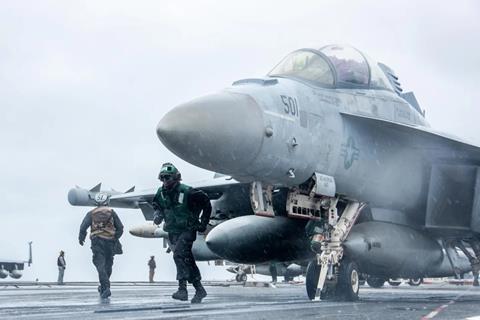The US Navy (USN) has entered a pact with the Japan Maritime Self-Defense Force (JMSDF) to collaborate more closely in the field of electronic attack.
The agreement will see more bilateral operations and training between electronic attack squadrons operated by the two forces, according to the USN’s 7th Fleet.

Aircraft involved in the initiative are USN Boeing EA-18G Growlers operating with Task Force 70, and Kawasaki UP-3D and other assets that serve with the JMSDF’s VQ-81 squadron.
“Today, we’re formalising our commitment to generate real warfighting advantage by increasing and enhancing our combined technology and expertise in the field of electronic warfare,” says USN Rear Admiral Greg Newkirk, commander of Task Force 70.
“Our work together moving forward will allow us to expand our shared air and maritime domain awareness, as well as refine and perfect our combined electronic attack capability.”
Task Force 70 controls forward deployed aircraft and ships for the 7th Fleet and includes a pair of electronic attack squadrons equipped with the EA-18G: VAQ-141 and VAQ-134.
VQ-81’s UP-3Ds – a locally-produced variant of the Lockheed P-3 Orion – are understood to have an electronic intelligence capability and are also used for electronic warfare (EW) training.
While VQ-81 has worked with the US military for some years, the agreement between the two militaries underlines Tokyo’s emphasis on improving its EW capabilites.
Tokyo is working on standoff EW versions of the Kawasaki P-1, a maritime patrol aircraft in service with the JMSDF, and the C-2, a large twin-engined tactical transport in service with the Japan Air Self-Defense Force (JASDF).
The JMSDF’s EW-roled P-1 entered development this year, and this process is expected to be completed in 2033. The JASDF’s EW-roled C-2 is further along: development started in 2020, with a technological and operational test due in 2026, and the completion of development in 2027.
Moreover, the BAE Systems AN/ALQ-250 Eagle Passive Warning Survivability System is a major element in an upgrade programme for about 70 JASDF Mitsubishi F-15J fighters.


























